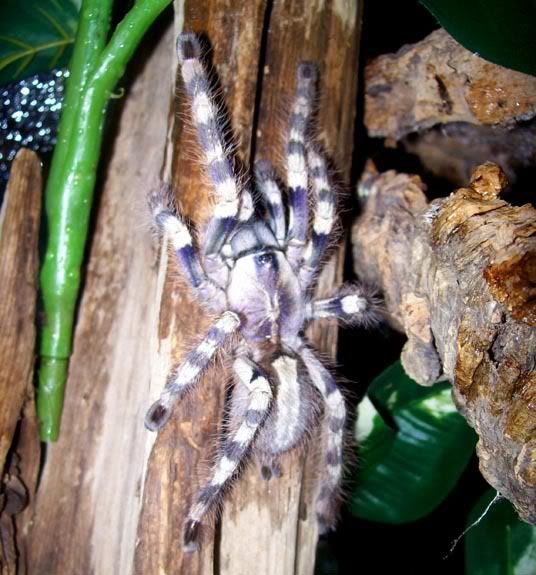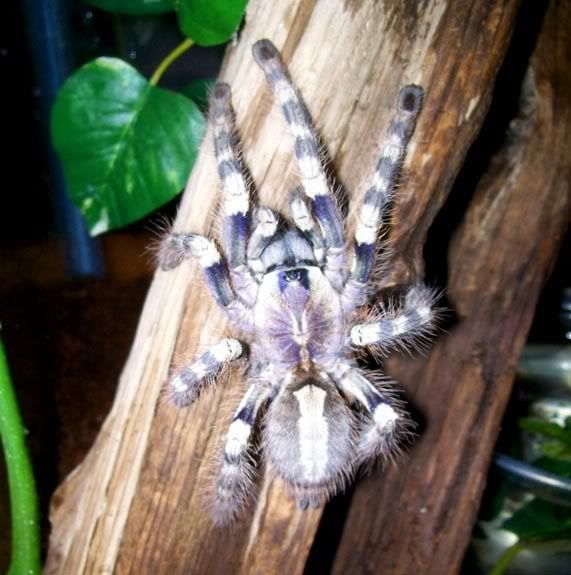- Joined
- Jul 12, 2007
- Messages
- 1,124
That male rufilata is about to start a nationwide stud tour...you might have to get in line for him.
Talk about performance pressure!
Talk about performance pressure!
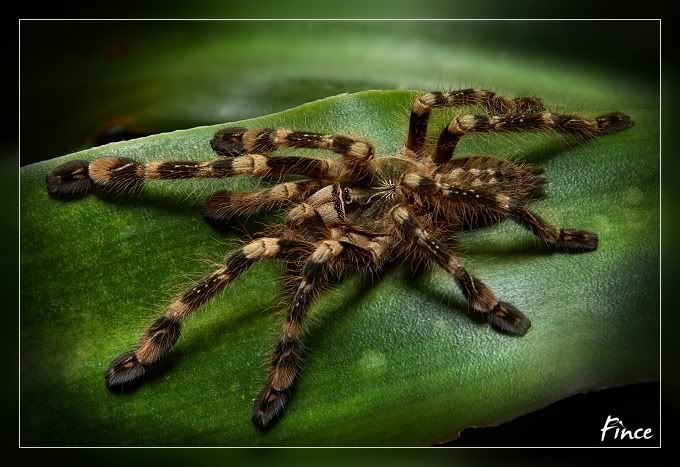
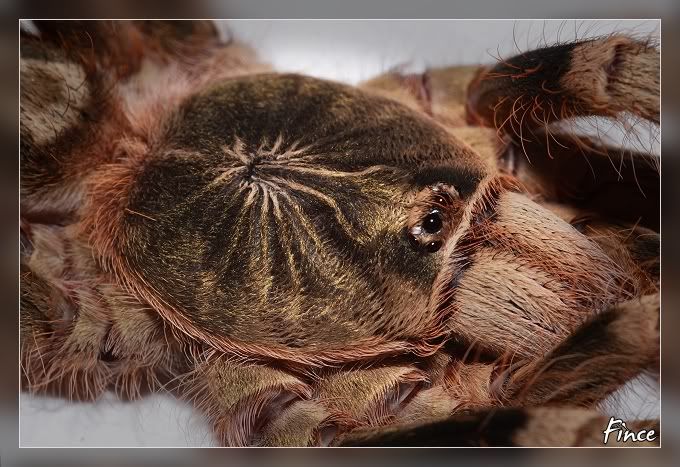
haha nice man.well if hes still round after all that let me know.i have a male rufi here aswell just not mature yet.hopefully next couple molts thoThat male rufilata is about to start a nationwide stud tour...you might have to get in line for him.
Talk about performance pressure!
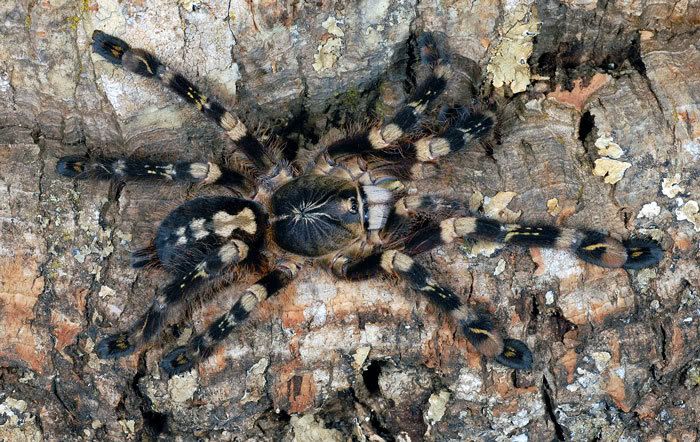
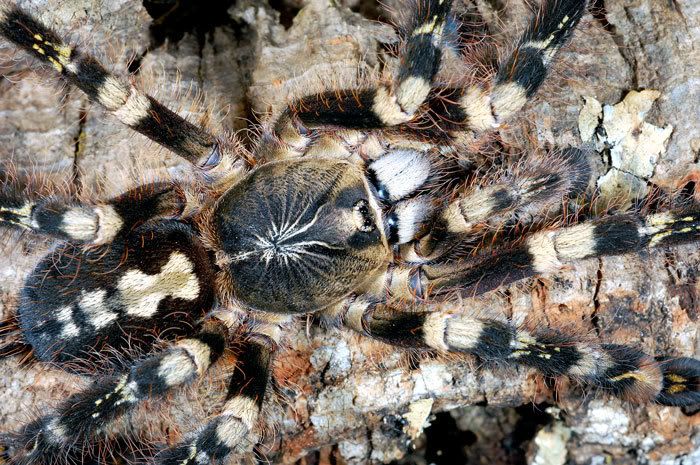
Great looking female Eric! She looks well fed and loved..Young female P. subfusca.


Eric
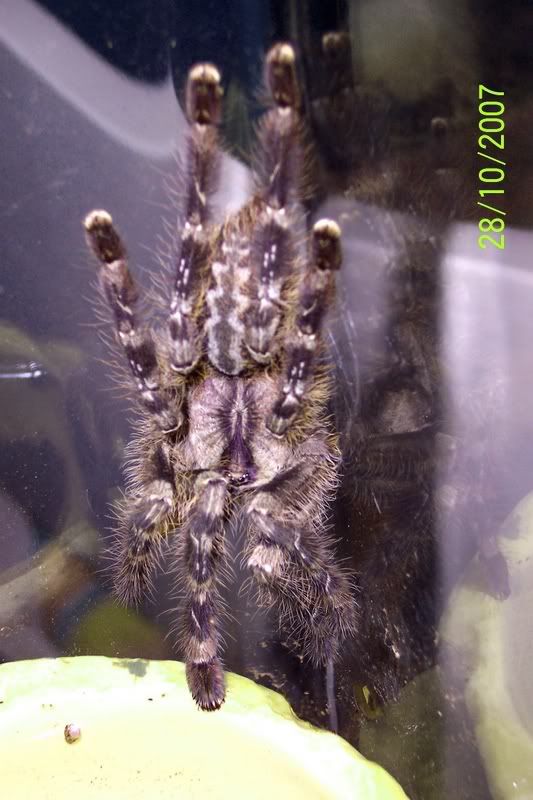
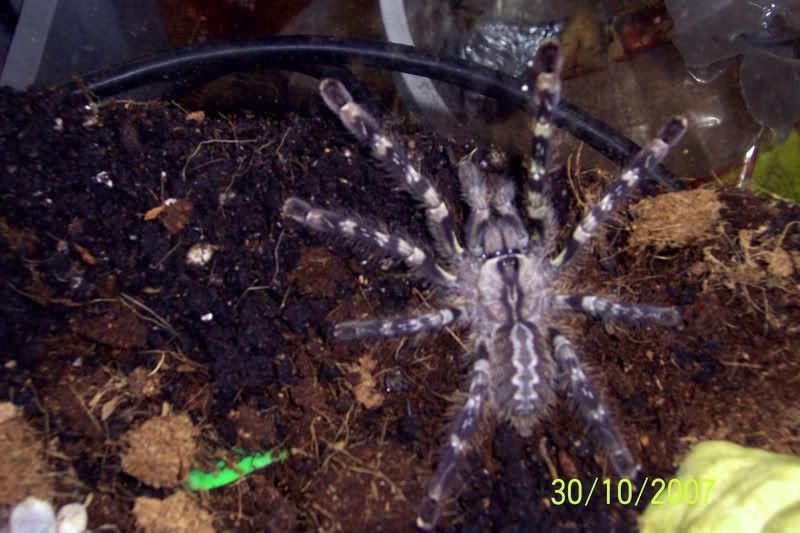
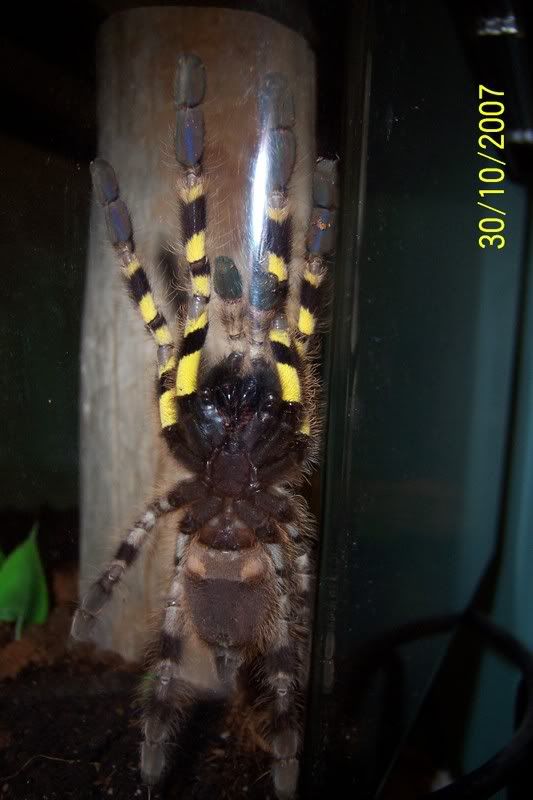
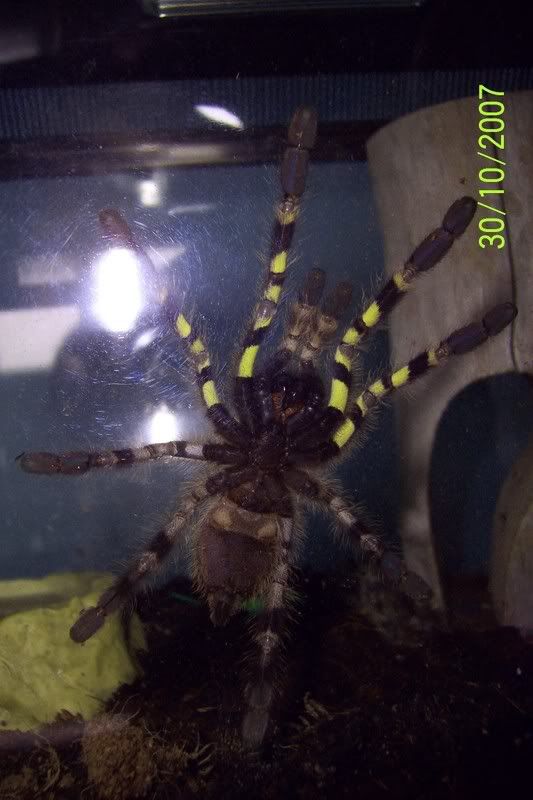
the highland have a tiger pattern on there bums where lowland go nearly all black and much larger than the highland form even the lowland males get big our largest was over 7 inch smallest 6.5 inch ,the one in the picture is 7 inch , mine and Davros p subfusca are from the same sacs , the female in the picture is over 7 inch for all the people who say these 2 forms are the same all i can say is your BLIND get some glasses LOL another thing do highland p subfusca produce sacs in warm temps at around 25-27 degrees i dont think so plus lowland form dont like the cold they thrive in warm conditions and even dont mind a dry spell i dont know why people are saying they are the same spider when they clearly dont look the same in colour & size & or behave the same ?
Phormingochilus, Do you believe that these all black spiders from the higher elevations will prove to be the same as P. uniformis? Do they attain larger sizes than typical subfusca from the higher elevations? Also, what areas(local names or general relative locations) consistantly produce the largest subfusca? Aside from nearly all black specimens, do you find that other subfusca from different regions retain the same color and patterns, or are there regional differences aside from size? Do regional size differences hold true in captivity under indentical growth conditions?Interesting ;-) My oldest "highland form" (wc - I know the collector) has entirely black bums and are now close to the 20 cm. legspan. She occasionally dries out as well ... would that make her a "lowland form"? Even though she was collected at the highest "highland"? David - they say it's the same spider because it's the same species. And since subfusca is found on the entire central highland in Sri Lanka noone is doubting for a second that there are regional varieties (I have two entirely jet black specimens from the highland as well, and also some rather pale ones - but still subfusca, I can say the same for my wc metallica and formosa - they are all varying in colour) but the terms "highland" or "lowland" are meaningless as there are many places that could be termed "highland" as the central highland is just that - the central highland ... So what "lowland" are we talking about? Coastal plain lowland? Or foothills lowland - are we talking the northern, western, eastern or southern form? You see the term is entirely artificial. What are we going to do when another variety is found in another "lowland" area? Nice subfusca variety though ;-)
Regards
Søren
Hi Soren,Interesting ;-) My oldest "highland form" (wc - I know the collector) has entirely black bums and are now close to the 20 cm. legspan. She occasionally dries out as well ... would that make her a "lowland form"? Even though she was collected at the highest "highland"? David - they say it's the same spider because it's the same species. And since subfusca is found on the entire central highland in Sri Lanka noone is doubting for a second that there are regional varieties (I have two entirely jet black specimens from the highland as well, and also some rather pale ones - but still subfusca, I can say the same for my wc metallica and formosa - they are all varying in colour) but the terms "highland" or "lowland" are meaningless as there are many places that could be termed "highland" as the central highland is just that - the central highland ... So what "lowland" are we talking about? Coastal plain lowland? Or foothills lowland - are we talking the northern, western, eastern or southern form? You see the term is entirely artificial. What are we going to do when another variety is found in another "lowland" area? Nice subfusca variety though ;-)
Regards
Søren
hi sorenInteresting ;-) My oldest "highland form" (wc - I know the collector) has entirely black bums and are now close to the 20 cm. legspan. She occasionally dries out as well ... would that make her a "lowland form"? Even though she was collected at the highest "highland"? David - they say it's the same spider because it's the same species. And since subfusca is found on the entire central highland in Sri Lanka noone is doubting for a second that there are regional varieties (I have two entirely jet black specimens from the highland as well, and also some rather pale ones - but still subfusca, I can say the same for my wc metallica and formosa - they are all varying in colour) but the terms "highland" or "lowland" are meaningless as there are many places that could be termed "highland" as the central highland is just that - the central highland ... So what "lowland" are we talking about? Coastal plain lowland? Or foothills lowland - are we talking the northern, western, eastern or southern form? You see the term is entirely artificial. What are we going to do when another variety is found in another "lowland" area? Nice subfusca variety though ;-)
Regards
Søren
hi soren
you say oldest female well all mine are young my oldest female is 3.6 years old my sub adults are 7 inch and about 14months old due to moult soon ? (i know collectors too )i did not say they are not subfusca i am trying to say they need to be kept apart so they dont get cross bred we already have hybrid pokies going around we dont want any more , i also have wc metallica they do differ in colour , i dont care what you call this form of subfusca as long as they are labled differant that is why peter pastor just added the lowland part to let people know they are a differant form if he had not done that they would have been cross bred to the common highland form , if its just the name thats bugging you well change it simple problem solved , do you agree they should not be crossed bred ?






